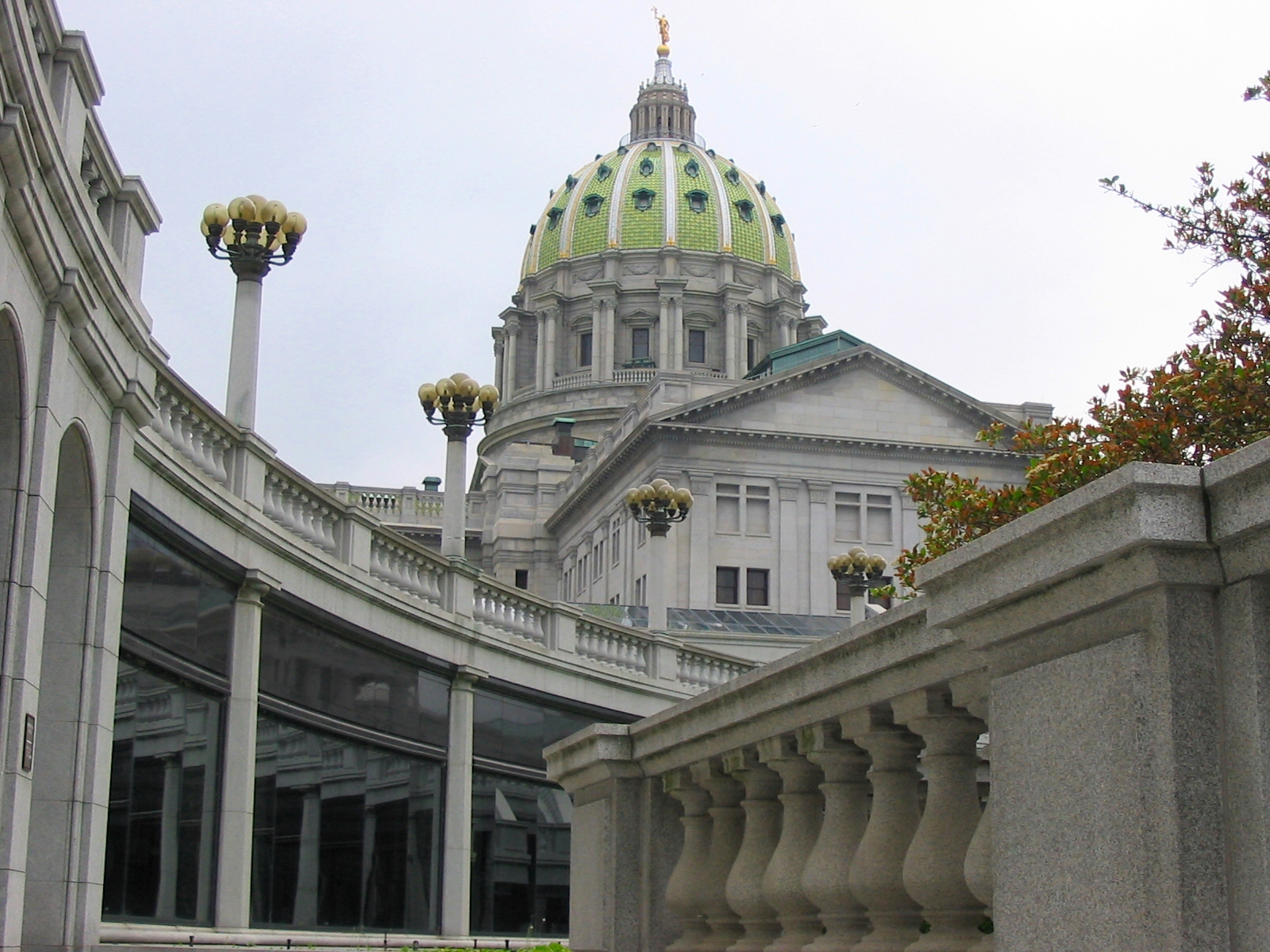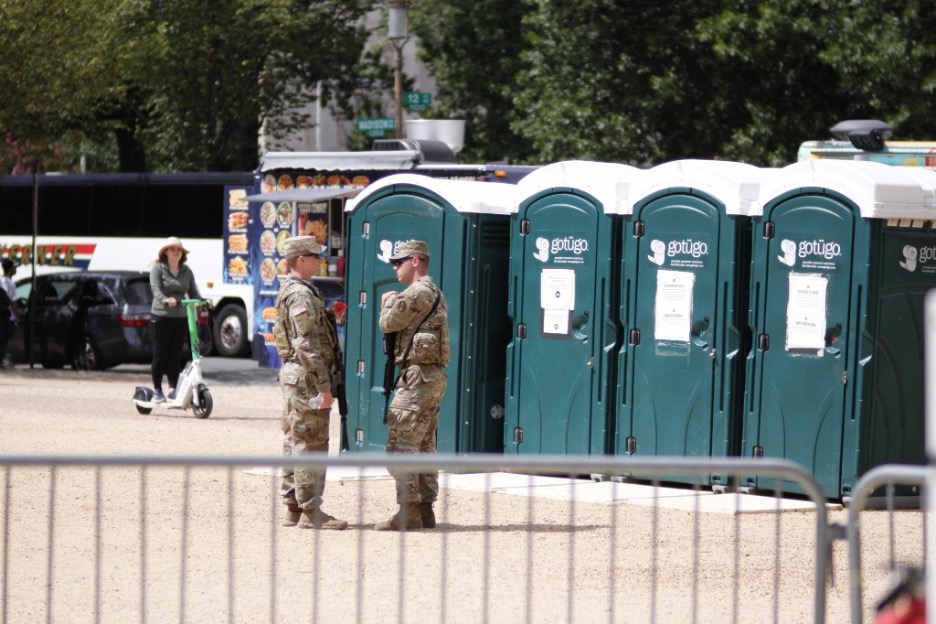State Legislatures Can’t Ignore the Popular Vote in Appointing Electors
The Supreme Court has unanimously undercut the core premise to this argument.

Published by The Lawfare Institute
in Cooperation With

As the counting of votes continues, an anti-democratic suggestion has taken hold among supporters of President Trump that Republican state legislatures could prevent a Biden presidency by directly appointing Trump-supporting electors to the Electoral College, rather than by sending a delegation of electors in line with their states’ popular votes. “GET READY TO DO YOUR CONSTITUTIONAL DUTY,” tweeted conservative radio host Mark Levin on Nov. 5. Soon after, Donald Trump, Jr., retweeted Levin. Later that night, Sen. Lindsey Graham joined the bandwagon. The idea is not entirely new: In September, Barton Gellman in The Atlantic reported that some state legislators were already considering this gambit—though Pennsylvania Republicans soon rejected the notion.
There are a host of clear legal problems with this suggestion, including that electors are required to be selected on Election Day, not later (absent circumstances not present here), and that due process requires a state to give effect to the fundamental right to vote for president. What’s more, such a move would justifiably be seen by much of the public as a coup. It is a terrible idea.
But even more fundamentally, the Supreme Court has unanimously undercut the core premise to this argument for legislative superpower. And we should know. We argued the opposite before the court this year, in the context of presidential electors, rather than state legislatures, going rogue—and we lost.
The legal theory that would allow state legislatures to go rogue and appoint electors without regard for the popular vote rests on an argument made by Chief Justice William Rehnquist in Bush v. Gore, for himself and two other justices. On this view, a legislature is unconstrained in its power to set the manner by which electors are selected—meaning that even after an election, the legislature could ignore the results and select a different slate altogether. A recent opinion by Justice Brett Kavanaugh suggests that Rehnquist’s argument may again be on the rise.
But advocates for this view need to recognize that between Bush v. Gore and today, the Supreme Court has unanimously decided that presidential electors are not actually “electors” but instead are bound to the people’s vote. That principle that cabins elector discretion must also constrain legislatures—at least if the country is to avoid an abomination that the Framers expressly rejected.
At its core, Rehnquist’s argument in Bush v. Gore defended the special structure that the Framers had erected for selecting the president. Central to that structure was “electors” — people chosen for the sole purpose of choosing who the president would be. Those electors were to be selected as the legislatures directed. The Framers had considered giving Congress the power to choose the president. They rejected it. They considered giving governors the power to choose the president. They rejected that too. They considered giving state legislatures the power to choose the president but feared that would make the president too dependent on the states, or on the political games played by the states, so they expressly rejected that idea as well. And they considered giving the people the power to choose the president directly. For many reasons — including most prominently the practical impossibility of running a campaign when it took four months to cross the nation — that idea never took hold.
Instead, the Framers crafted a distinctive structure, echoing the plan Maryland had for selecting its governor. Electors were to be selected in the manner the legislature chose—but it was electors, not state legislatures, who were to decide who the president should be.
This structure did create, as Rehnquist observed, unique features within the constitutional design. In exercising their power to decide how electors are to be chosen, legislatures could not be constrained by either state law or the state’s constitution. If a state’s constitution, for example, said that the people shall choose the electors in an election, that rule did not in fact constrain the state legislature. Instead, “after granting the franchise” to the people, as a majority of the Supreme Court in Bush put it, a legislature could “take back the power to appoint electors” “at any time.” Or put differently, when the legislature acted pursuant to the power granted to it by Article II, it stands above any limits imposed by state law.
We each made a similar argument to the Supreme Court in May when, in Chiafalo v. Washington and Colorado v. Baca, we defended the Framers’ plan for presidential electors. Electors, as we argued—though selected in the “manner” that the state legislatures directed—were given their power by the Constitution, not state legislatures. That power, we argued, could not be constrained by state law, for precisely the same reason that state law could not constrain state legislatures. Electors were above state regulation, just as state legislatures were.
This is not the only context in which the Supreme Court has recognized that state legislatures have superpowers granted to them by the federal constitution. In Leser v. Garnett (1922), the court had held that even a state constitution could not constrain a state legislature when that legislature was ratifying an amendment to the federal constitution. When exercising that ratifying power, the legislature performed a “federal function.” That function could not be constrained by the state in any way, whether by its constitution or, as the Supreme Court had held in an earlier case, Hawke v. Smith (1920), by an express vote of its people.
Such cases do support the theory of legislative superpower birthed by Chief Justice Rehnquist and echoed by Justice Kavanaugh. But that superpower is to the end of selecting electors. The Framers expressly rejected the idea that the state legislatures themselves should choose the president. The corruption of post-election bargaining was obvious to them. They therefore expressly avoided giving any existing entity the power to select a president, so as to avoid that obvious corruption. Instead, the entity that was to make that choice was to be one that was free of any obligation to anyone —that is, the electors themselves.
In Chiafalo, however, the Supreme Court unanimously resolved that history had overtaken the Framers’ design. Nine justices agreed that even if the Framers had assumed that “electors” would be free to cast a vote however they chose, an emerging presumption of democratic control had displaced that original design. Whatever they originally expected, the court held, there was nothing in their words that constrained the power of the state to ensure that it was the choice of the people that would ultimately decide how the electors would vote. Elector discretion had been displaced by democracy. “Here,” as Justice Elena Kagan wrote in the closing line of her opinion, “[w]e the people rule.”
If the electors have lost their superpowers to an emerging democratic consensus, then legislatures must have lost them as well. It would be a complete perversion of the Framers’ design to remove the constitutional discretion of electors but accept a constitutionally unconstrained power in the state legislatures. The framers expressly decided against that obviously corrupt design: “You want Pennsylvania’s electoral votes? How about more tariffs for steel?” And if the justification for ignoring their choice in Chiafalo was democracy, that same justification must now mean that the legislatures have no special power to deviate from the choice of the people, at least once that choice is made. If “the people” constrain the electors, so too must “the people” constrain the legislatures.
Applied in a principled way, Chiafalo changes the scope of any legislative superpower. Maybe in the context of the precise question raised in Bush v. Gore, there remains a presumption in favor of legislative text over judicial constructions of that text. But Chiafalo must mean that state legislatures cannot now act against the vote of the people any more than presidential electors can.
Thankfully, it appears very unlikely that any legislature will accept Mark Levin’s challenge, and select a slate contrary to the votes of its people. But if any legislature were to take up the call, the Supreme Court would be asked to review that unprecedented act. Its ruling should be clear that this move is illegal. Prominent originalist scholars have noted how far Chiafalo strayed from the framing design. It would be extraordinary now if, in the name of originalism, the justices would sanction an even greater perversion of the original design. The greatest charge against originalism is partisan selectivity. We do not believe that selectivity is inherent to originalism. But few would agree if, after ignoring the Framers in Chiafalo, the Supreme Court invoked the Framers now to defeat a candidate who has won an absolute majority of the public’s vote. Whatever else that result would say, it would certainly not communicate that “[w]e the people rule.”





